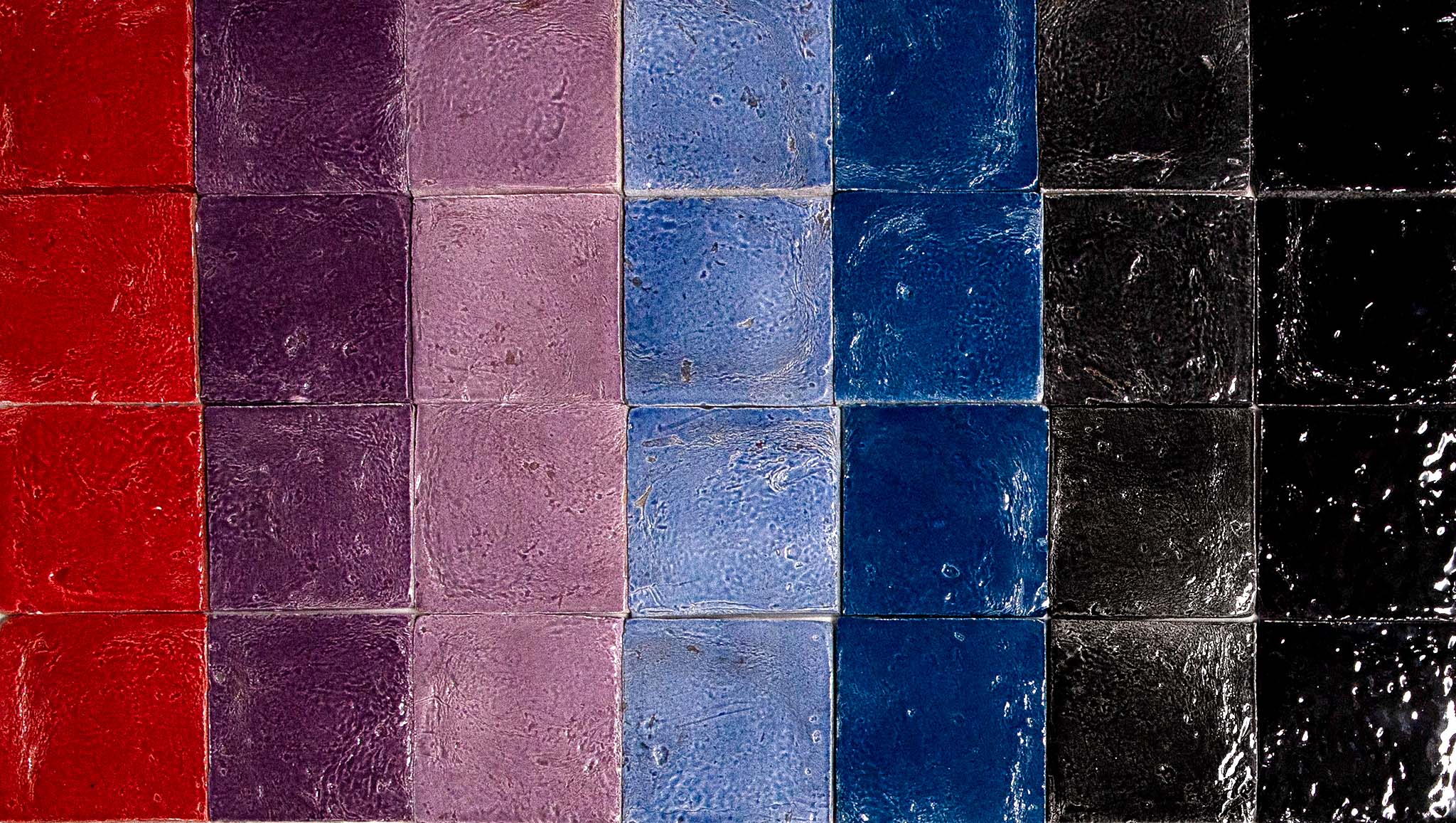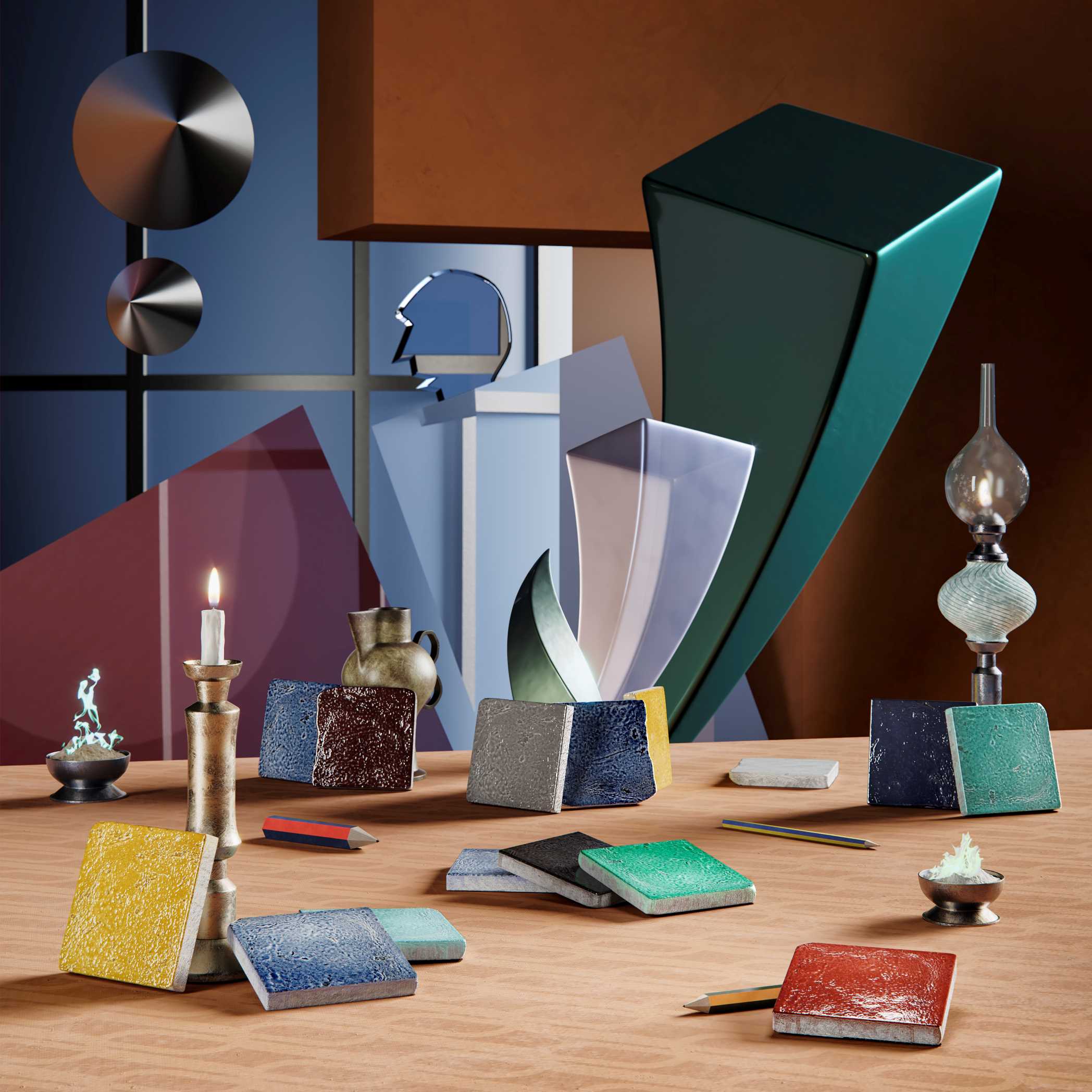Handmade Glazed Terracotta
Sometimes a simple technical improvement can have unexpected implications, can open up unthinkable scenarios. The history of handmade glazed terracotta is an example of this. In fact, the culture of glazing terracotta was born almost by accident, giving birth to a thousand-year-old tradition. Fangorosa has decided to reinterpret it according to its own stylistic signature.
Terracotta is the earliest pavement material of Italian craftsmanship, but since the Etruscan period its manufacture has been marked by maximum versatility. Scattered throughout Central Italy, especially Umbria and Tuscany, Etruscan furnaces represented not only centers of urban aggregation, but also true manufacturing centers around which orbited craftsmen of different natures.
The production that rotated around the factories was diversified. There were artisans engaged in the making of pavements, others in that of roof tiles, and still others specialized in the making of pitchers and amphorae for the preservation of oil and wine, the consumption of which, we should remember, played a role of primary importance in Etruscan society.
Right in the attempt to perfect the jars, maximizing the storage of oil and wine, terracotta experienced the principle of a new aesthetic by acquiring through glazing a richer and more charged chromatic appearance.
Glazed terracotta was born from the need to create containers that would not absorb oil and wine, imposed glazing with the aim of making the material waterproof. The technical procedure, carried out with a purely instrumental intent, proved decisive in the emergence of a new declination of terracotta and unprecedented decorative possibilities. These touched not only on the making of objects such as pitchers but also extended to coverings and surfaces including pavements.
Over time, the culture of glazing terracotta evolved and developed based on the intrinsic and peculiar characteristics of the different terracotta families that lived in Italy.
Therefore, depending on the region, it is possible to come across different types of handmade glazed terracotta, such as:
- Umbrian glazed terracotta
- Sicilian glazed terracotta
- Tuscan glazed terracotta
- Lombard glazed terracotta
Glazed terracotta is a mysterious and unpredictable material: depending on the porosity and permeability of the surface, the glaze is absorbed in completely different ways, generating unique and different tiles from time to time.
For its Umbrian glazed terracotta collection, Fangorosa has chosen a square, king of parallelograms, a vehicle of linearity and harmony.
The 10*10 format is presented with classic traditional colors such as black and white along with a range of other colors identified according to modern trends.
Among the most relevant are:
- The grays (Anthracite, Shadow Gray, Stone Gray)
- The blues (Aloe , Ocean, Turquoise, Sapphire)
- The purples ( Iris, Indigo, Lilac)
- The warm tones ( Red, Bordeaux, Mustard)
Terracotta and ceramic are different in two ways:
- by the clay that is used
- by firing temperature
Ceramic is worked in several steps:
- first of all the preparation of the mixture that is shaped by hand, lathe or mold then dried.
- It is then coated, decorated, and fired in open hotplaces or kilns at one or more times and at different temperatures depending on the type of ceramic to be obtained.
The clay used for terracotta is a porous paste, while the clay used for ceramic is compact, and terracotta is also fired at a temperature of about 980°-990° C and then glazed to make it colorful and waterproof.
In contrast to an industrial ceramic where the surface receives only a veil of glaze, terracotta absorbs much more of it, leaving an intense trace that gives back to the eye an effect of great depth.
Thanks to the glazing process, glazed Umbrian terracotta has higher resistance and protection to external agents than traditional terracotta.
Glaze makes terracotta waterproof we therefore recommend, for routine maintenance, “Fangorosa Soap”, a natural and sustainable detergent with a sanitizing and shining action, useful for preventing mold, bacteria and germs.
To make sure you don’t miss all the new products and updates, follow us on Instagram as well.





